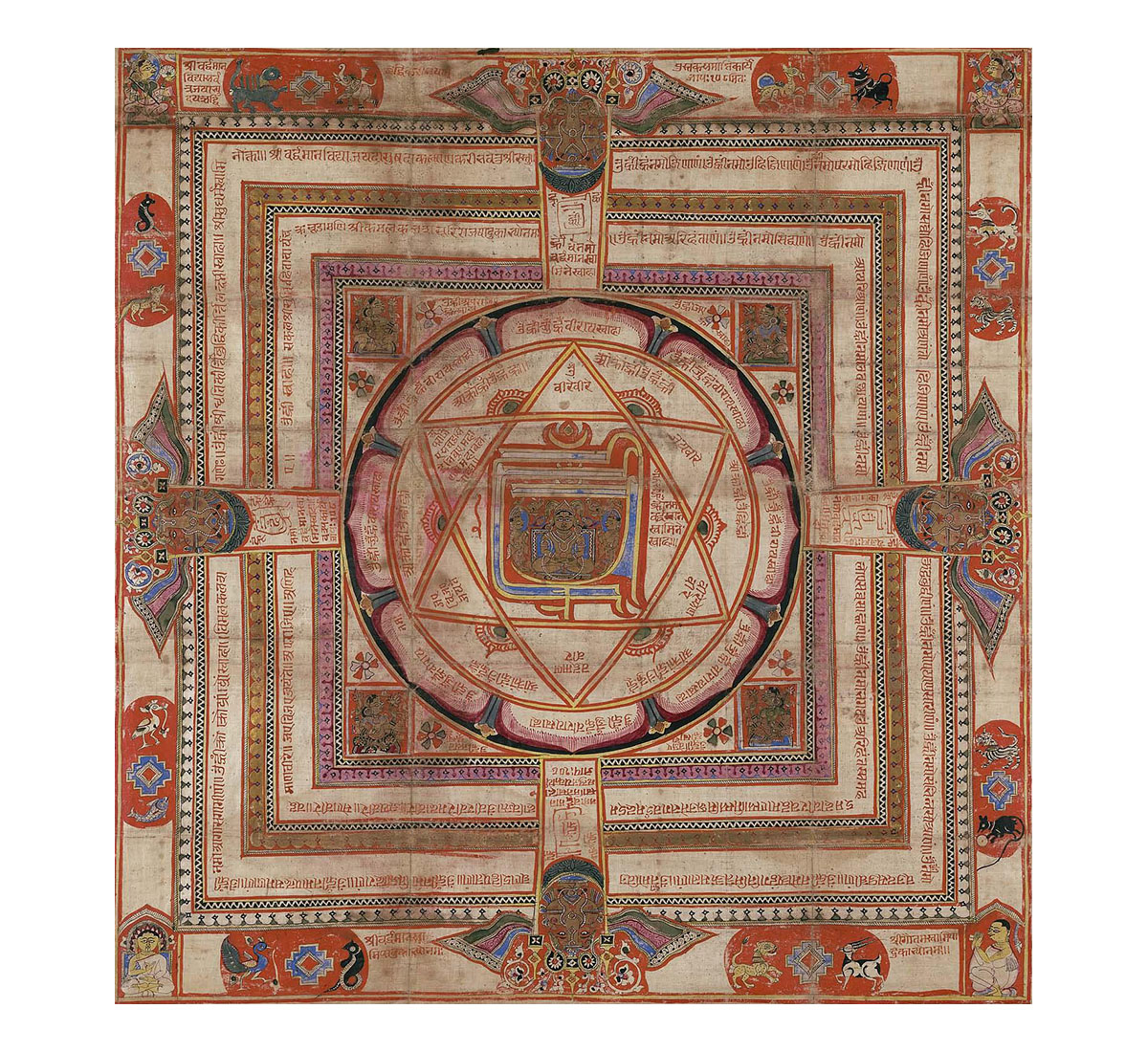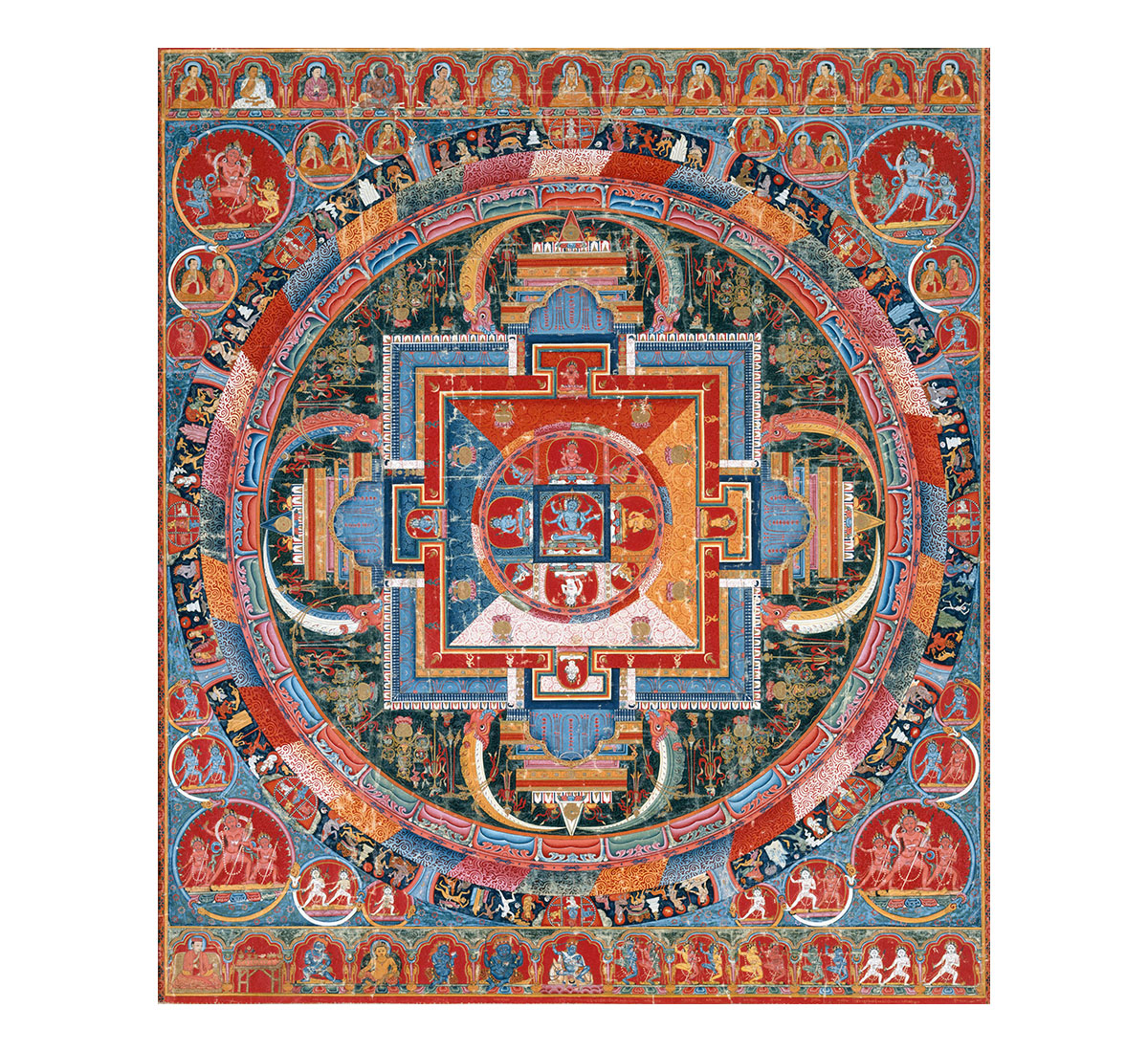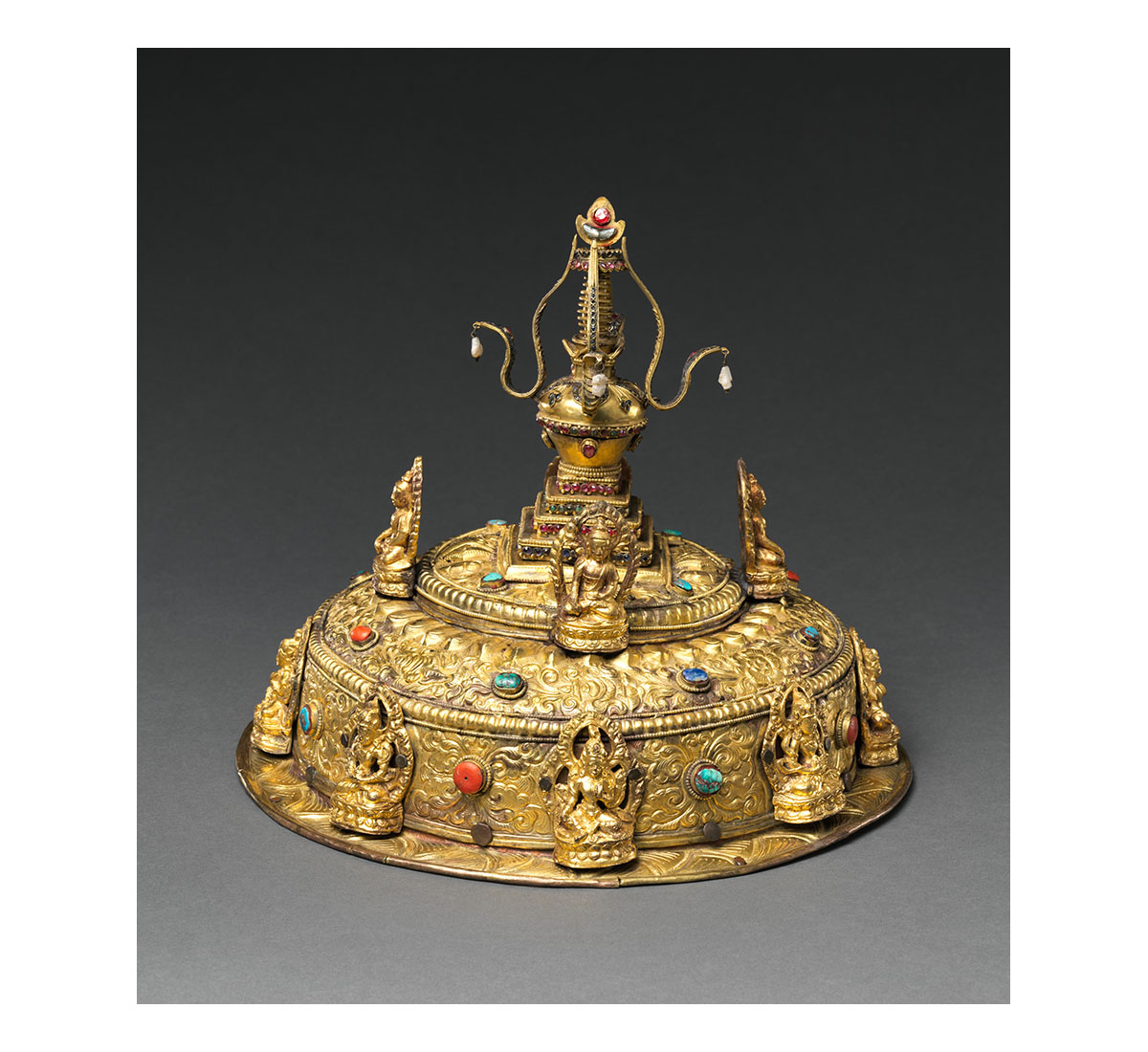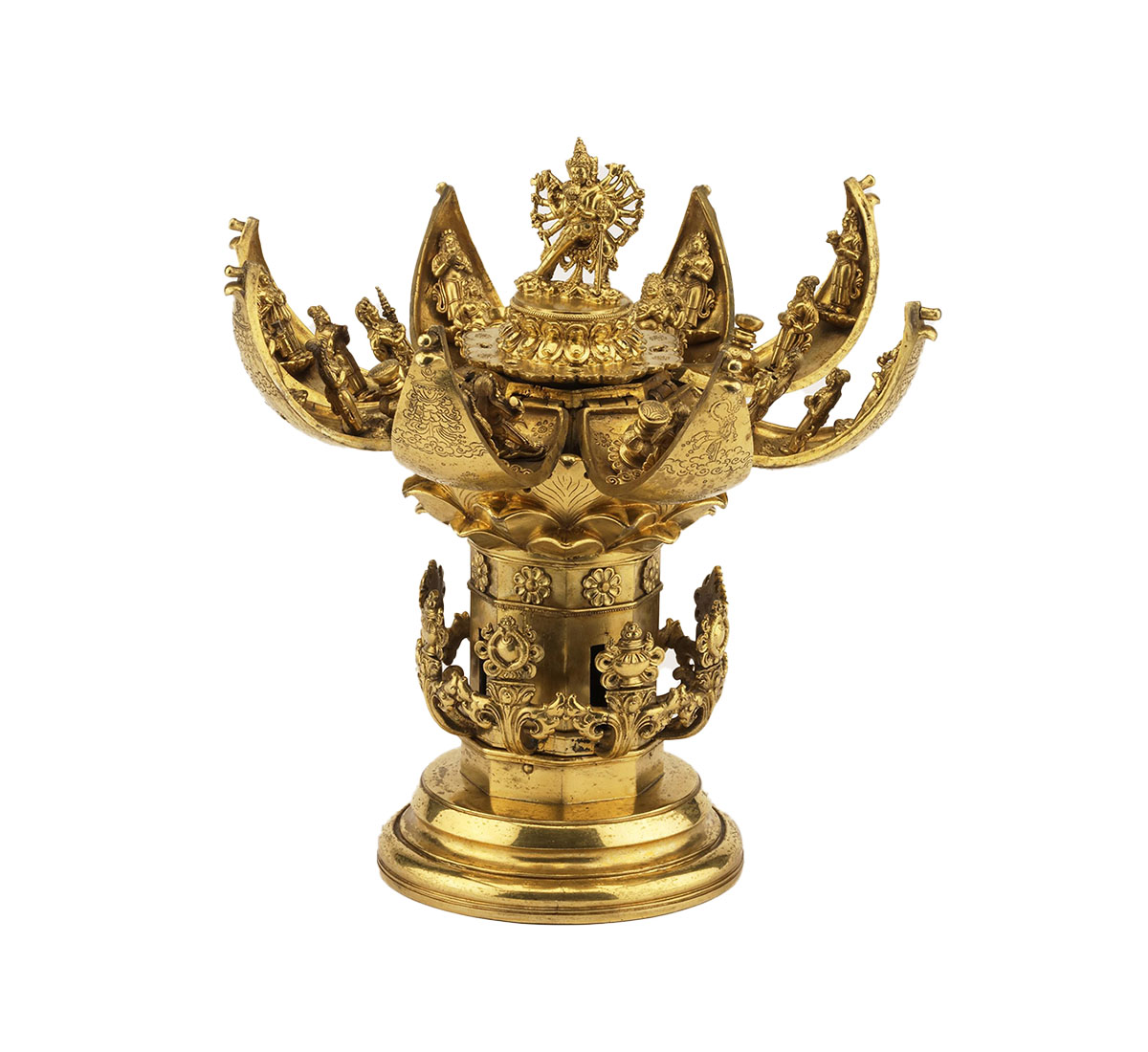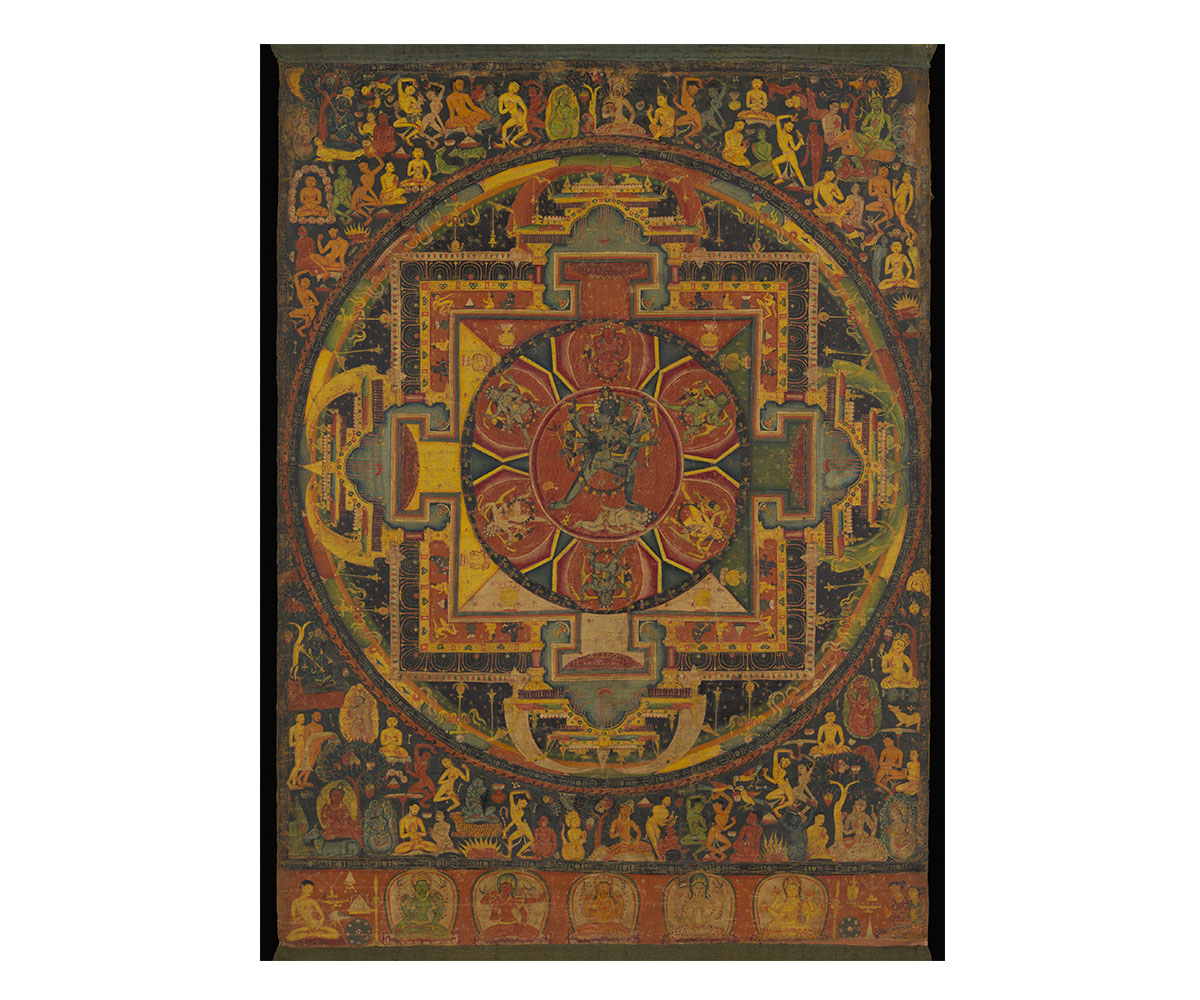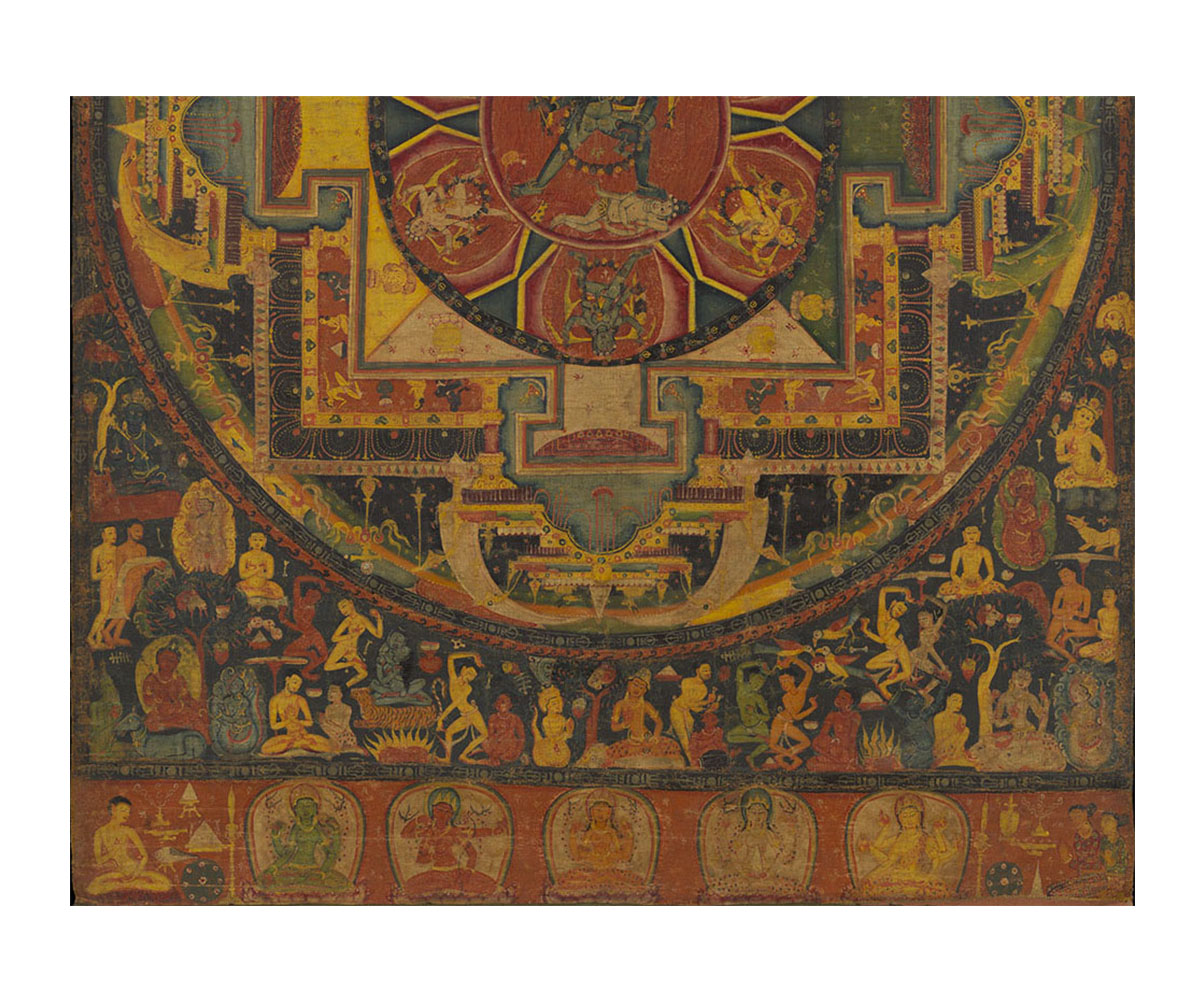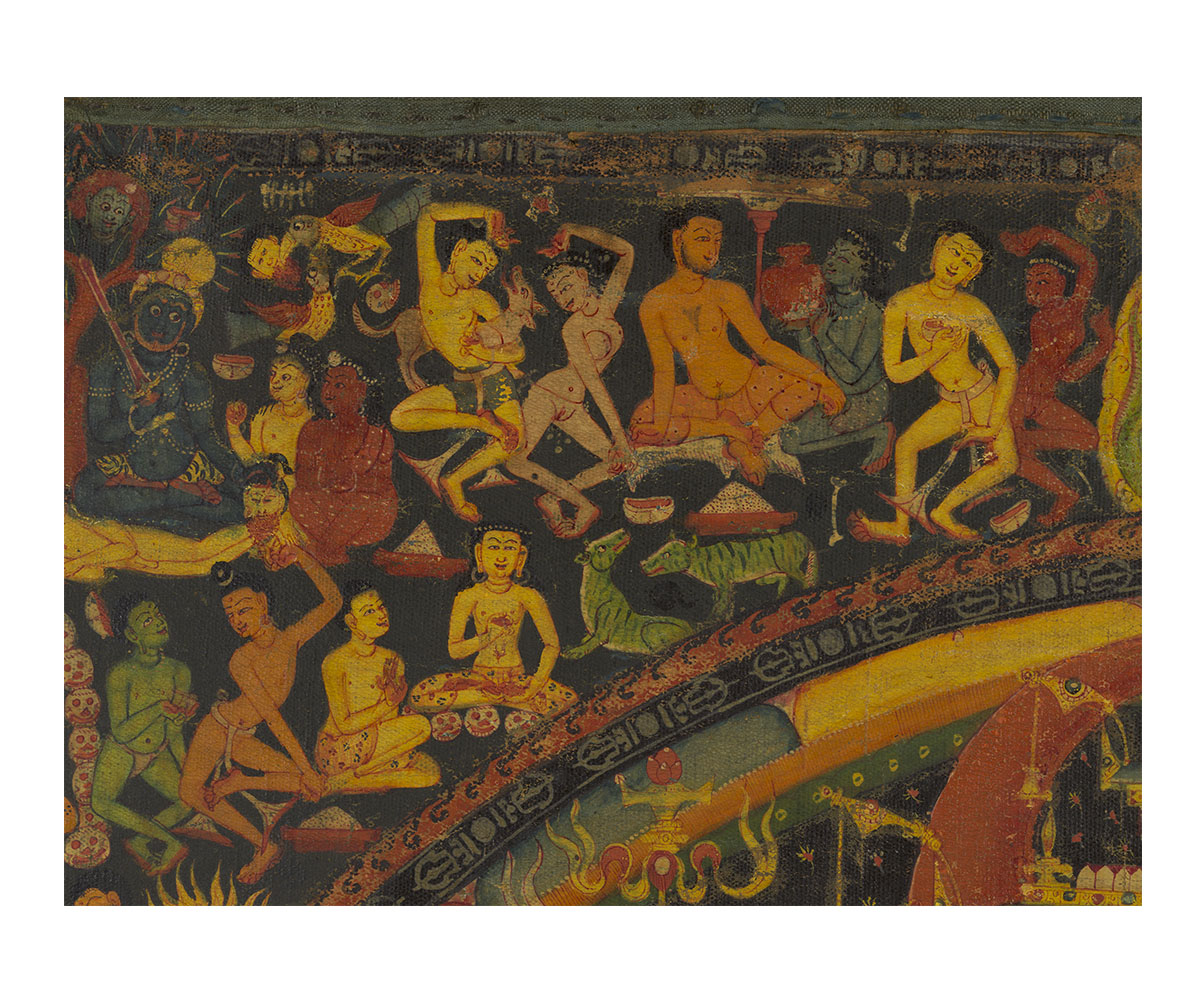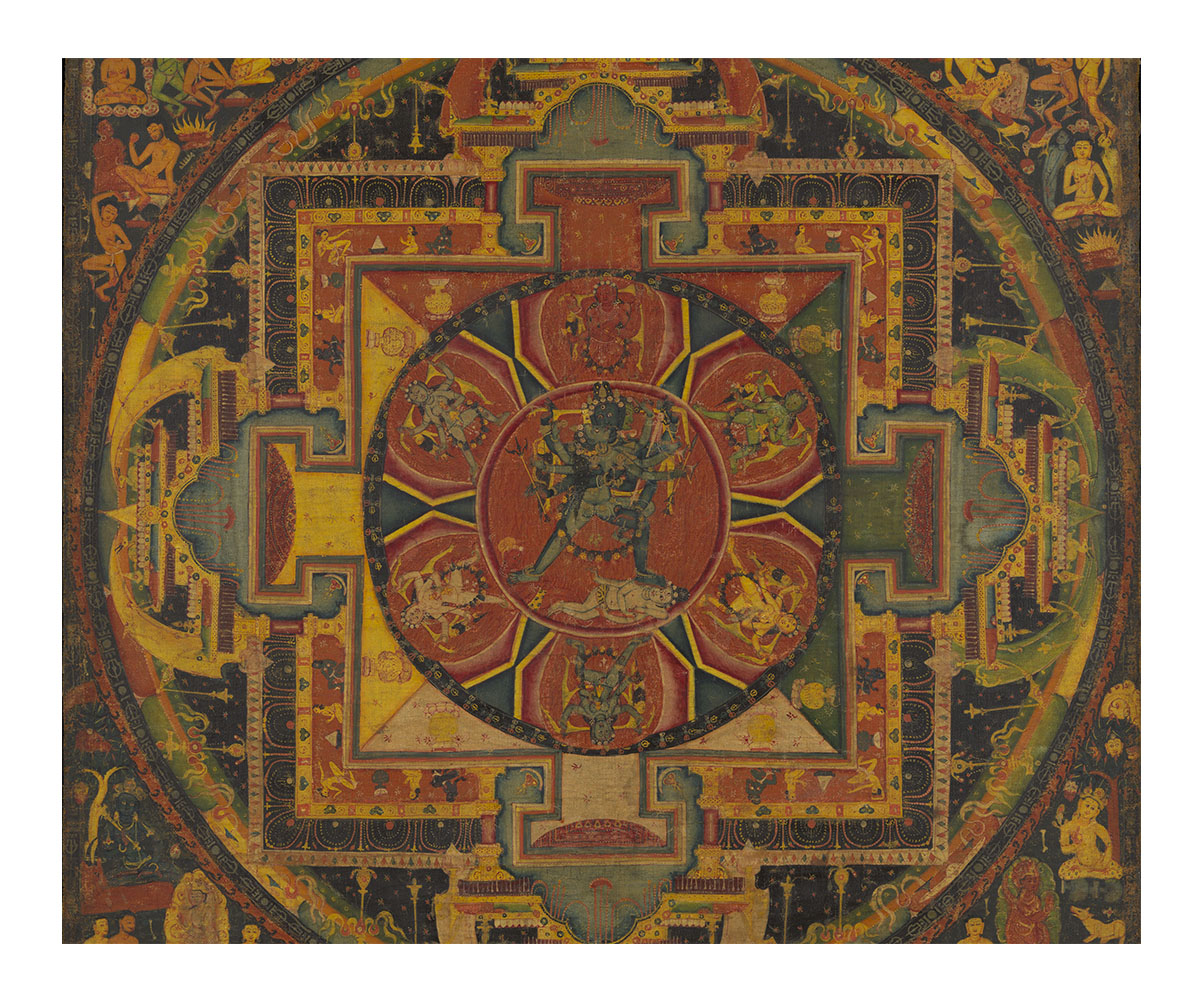ARTICLE
Mandala
Sacred geometric images found in Buddhist, Hindu and Jain art, mandalas are symmetrical circular forms that typically comprise a central deity surrounded by motifs and symbols. Often used by devotees as a meditation tool, a mandala is intended to function as a diagram or map of the central figure’s spiritual realm. When hung in temples or monasteries, mandalas are also thought to have a talismanic power, protecting the structure from destruction or deterioration by reinforcing the space spiritually. The structure of mandalas varies from one religious context to another, with the most elaborate and codified ones found in East Asian sects of Buddhism, particularly Tibetan, Pure Land and Shingon Buddhism. A mandala may be painted on paper or cloth such as in Thangka paintings, as well as drawn on ground with white and coloured threads or rice powders. In some instances, it may be fashioned in bronze, or rendered in stone, like it is at the Borobudur temple in Indonesia.
Depending on their definition, different scholars may trace the origins of the mandala to different points in south Asian history, with some suggesting that the Pashupati seal found at Mohenjo-Daro could be seen as a mandala, as it consists of a central deity surrounded by symbols from his realm. Similarly, a relief image in the Kanheri caves, dated to the sixth century CE, is considered a mandala because it appears to depict the Buddha surrounded by four identical others, possibly an early instance of the Five Tathagatas. It has also been posited that the circumambulation of stupas and certain Buddhist pilgrimage routes can be read as geographical mandalas through which devotees have to physically travel. Other scholars argue that it is only after Buddhist iconography developed enough for each Buddha and bodhisattva to have their own set of distinguishing symbols, that mandalas have been made as a spiritual template. It is generally accepted however, that the mandala was fully realised in its current form in Tibetan Buddhism by the eighth or ninth century. Thangkas from as early as the eleventh and twelfth centuries feature complex mandala diagrams and intricate mandalas are also present in the murals at early Tibetan sanctuaries and monasteries, such as Tabo, Alchi, Sakya and Gyantse.
Towards the end of the first millennium CE, a more elaborately structured Vajrayana Buddhist imagery developed in the eastern and northern Indian subcontinent under the rule of the Pala dynasty, particularly at the centres of Nalanda and Kurkihar. These were heavily influenced by Tantric symbolism, which was layered onto existing Buddhist iconography and adjusted to reflect core Buddhist principles and ways of envisioning the world. It is during this period that new, visually impactful ways of representing Buddhist figures and the cosmic order emerged. These primarily took the form of mandalas as well as the many-limbed and many-headed forms of bodhisattvas. Such visually potent imagery was meant to enhance the devotee’s meditation practice and provide a faster path to enlightenment. Notable mandalas established in India before the decline of Buddhism include the Ashta Maha-Bodhisattva mandala, which shows eight major bodhisattvas encircled around a large central Buddha, usually Sakyamuni or Vairochana; and the Dharmadhatu Vagishvara mandala, which features Hindu deities along its outer boundary acting as guardians.
Mandalas following Tibetan Buddhism are typically made as thangkas, or painted cloth scrolls, and also as sand paintings that are meant to be ritually erased. There are several types of mandalas, but most share a set of basic features. The mandala has an outermost ring of fire, which is meant to burn away the ignorance and spiritual barriers of the devotee. Optionally, and immediately inside or outside the ring are the eight charnel grounds, usually depicted as a landscape inhabited by yidams, fierce guardian deities who offer parts of corpses to animals, symbolising the surrender of the illusions of the material world, much the same ways as a human body is surrendered to nature in a sky burial. The ring of fire also encloses the square mandala palace, within which the mandala’s central deity or Buddha resides, surrounded by a small circle of other relevant figures, all facing the centre. The palace — drawn as though seen from above — takes the form of concentric squares, with a gate on each wall. The charnel grounds are absent in most mandalas, with the landscape being replaced by patterns of waves, and the general scene of pleasure and sacrifice being replaced by a few large yidams. In some cases, the charnel grounds are shown as a series of dynamic figures arranged in a circle along the ring of fire, with a motif dividing this into eight sections. In rare examples, such as the twelfth-century Nepalese Chakrasamvara Mandala thangka currently housed at the Metropolitan Museum of Art, the full elaborate depiction of the charnel grounds is visible. The mandala is also at times envisioned as an architectural diagram showing the ground plan of a pyramidal structure — which is often interpreted as Mount Meru — with the central figure at the summit.
More formulaic mandalas also exist, such as Garbhadhatu or “womb realm” mandala and the more frequently occurring Vajradhatu mandala, which means “diamond or lightning realm”, both of which contain a large number of Buddhas and bodhisattvas, enclosing a central circle of the Five Tathagathas. With the exception of the central Tathagata, the Vajradhatu mandala is divided into four parts, each a different colour for the four secondary Tathagatas, and includes in its fullest form all the attendant bodhisattvas and minor figures associated with each Tathagatha in their respective quadrant. More rare types include the Dharmadhatu mandala, which forms the layout of the main temple at the Tabo monastery, and consists of a Vajradhatu mandala further surrounded by bhumi deities, who guide devotees through the ten-step path of a bodhisattva.
While Buddhist, Hindu and Jain mandalas vary in structure, their shared Tantric roots mean that they have a few key characteristics in common: they are all used as a focusing mechanism in meditation, they feature a central deity with whom the devotee aims to merge, and they are often made as cosmic maps (arranged according to the sect’s particular beliefs), with Mount Meru as the axis mundi of the universe. Hindu mandalas, known as yantras, are largely geometric and circular in their structure and rarely feature human forms. When they do, the design is seen as the central deity’s spiritual abode, and may feature both square and circular forms. Yantras are made on a variety of surfaces, both in places of worship as well as domestic spaces. Jain mandalas, historically painted on large wall hangings or in illustrated manuscripts, form a major part of the religion’s cosmology, usually depicting the Lokpurusha, the Adhaidvipa Pata, or the twenty-four tirthankara of Jainism. The body of the Lokpurusha, or the cosmic man, is shown segmented into the three realms of early Jainism: Urdhva Loka or the celestial realm, Madhya Loka, or Earth, and Adho Loka, the netherworld. Adhaidvipa Pata, or the map of “two and a half continents,” is arranged as concentric bands of land with rings of ocean between them. The central island is Jambudvipa, the land of the jambu or rose apple tree.
Mandalas have also found their way into alternative belief systems in the West, particularly New Age practices, with some — such as the Swiss psychoanalyst Carl Jung — suggesting that they may be psychological tools through which the conscious self tries to assemble and harmonise with the unconscious.
Bibliography
Our website is currently undergoing maintenance and re-design, due to which we have had to take down some of our bibliographies. While these will be re-published shortly, you can request references for specific articles by writing to hellomapacademy@map-india.org.





